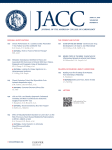
近日,国际著名杂志J Am Coll Cardiol在线报道了血浆中的exosome可保护心肌免受缺血复灌损伤。
结果详细步骤:
第一步:
用超离方法提取健康人血、及大鼠血中的exosome,电镜、Nano、流式、western等鉴定exosome。
第二步:
1、大鼠心梗模型,术前尾静脉注射exosome,发现可以减少梗死面积。
2、用HL-1细胞系,缺氧后发现细胞凋亡明显,而用exosome预处理后发现凋亡减少。
3、缺血预适应后,发现exosome的大小形态与正常相似,但是血中浓度明显升高。
第三步:
检测一些信号通路。
第四步:
1、发现心肌细胞并不能摄取exosome,因此推测exosome-myo作用乃通过surface接触完成。
2、HSP70是一种DAMP,发现它在exosome表面表达。用中和抗体阻断HSP70及其受体TLR4后,发现exosome的作用消失。
原文来源:Vicencio JM, Yellon DM, Sivaraman V, Das D, Boi-Doku C, Arjun S1, Zheng Y, Riquelme JA, Kearney J, Sharma V, Multhoff G, Hall AR, Davidson SM.Plasma exosomes protect the myocardium from ischemia-reperfusion injury.J Am Coll Cardiol. 2015 Apr 21;65(15):1525-36. doi: 10.1016/j.jacc.2015.02.026.
BACKGROUND: Exosomes are nanometer-sized vesicles released from cells into the blood, where they can transmit signals throughout the body. Shown to act on the heart, exosomes' composition and the signaling pathways they activate have not been explored. We hypothesized that endogenous plasma exosomes can communicate signals to the heart and provide protection against ischemia and reperfusion injury.
OBJECTIVES: This study sought to isolate and characterize exosomes from rats and healthy volunteers, evaluate their cardioprotective actions, and identify the molecular mechanisms involved.
METHODS: The exosome-rich fraction was isolated from the blood of adult rats and human volunteers and was analyzed by protein marker expression, transmission electron microscopy, and nanoparticle tracking analysis. This was then used in ex vivo, in vivo, and in vitro settings ofischemia-reperfusion, with the protective signaling pathways activated on cardiomyocytes identified using Western blot analyses and chemical inhibitors.
RESULTS: Exosomes exhibited the expected size and expressed marker proteins CD63, CD81, and heat shock protein (HSP) 70. The exosome-rich fraction was powerfully cardioprotective in all tested models of cardiac ischemia-reperfusion injury. We identified a pro-survival signaling pathway activated in cardiomyocytes involving toll-like receptor (TLR) 4 and various kinases, leading to activation of the cardioprotective HSP27. Cardioprotection was prevented by a neutralizing antibody against a conserved HSP70 epitope expressed on the exosome surface and by blocking TLR4 in cardiomyocytes, identifying the HSP70/TLR4 communication axis as a critical component in exosome-mediated cardioprotection.
CONCLUSIONS: Exosomes deliver endogenous protective signals to the myocardium by a pathway involving TLR4 and classic cardioprotective HSPs.
版权归 外泌体资讯网 所有,未经书面许可,禁止转载。联系邮箱exosome@exosome.com.cn
外泌体资讯网 JACC:血浆exo可以保护心肌的缺血-再灌注损伤





